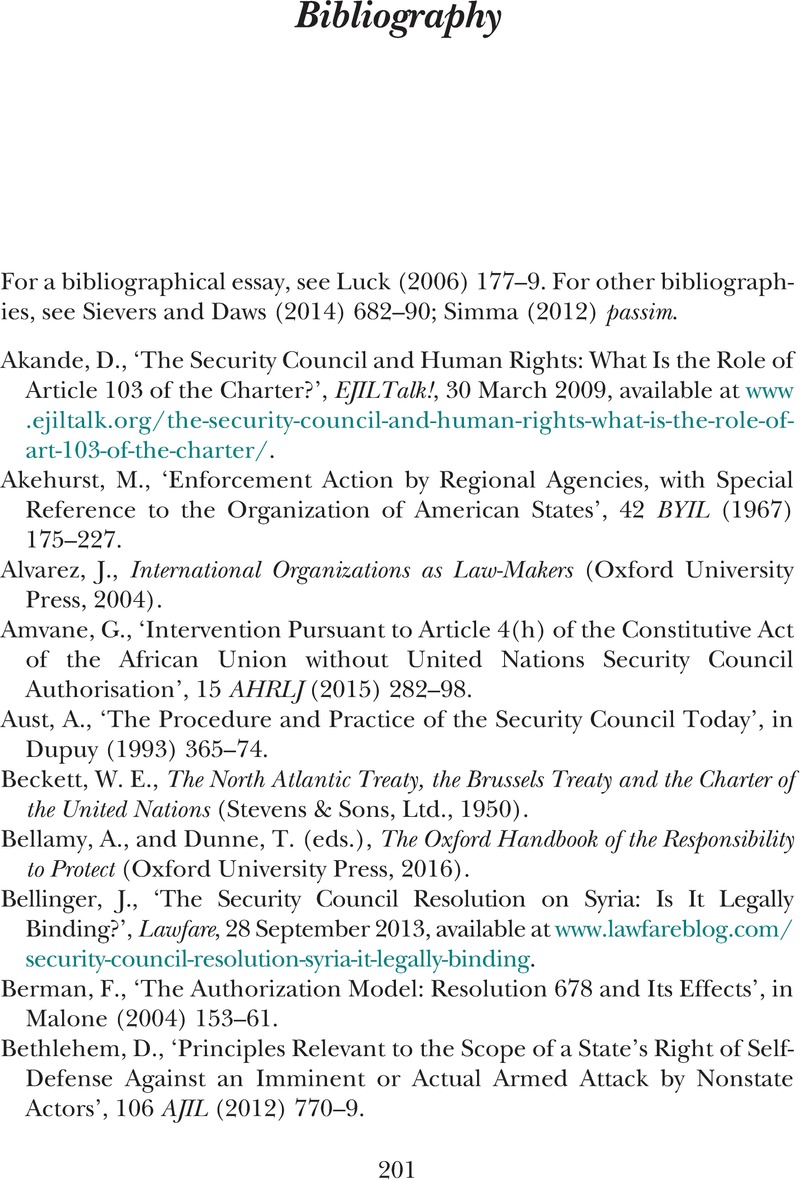Book contents
- The UN Security Council and International Law
- Hersch Lauterpacht Memorial Lectures
- The UN Security Council and International Law
- Copyright page
- Contents
- Preface
- Note on Writings
- Note on Documentation and References
- Table of Cases
- Abbreviations
- Introduction
- 1 The Legal Nature of the Security Council
- 2 Decisions of the Security Council
- 3 The Powers of the Security Council
- 4 Limits on the Powers of the Security Council
- 5 The Security Council and Measures Not Involving the Use of Force
- 6 The Security Council and the Use of Force
- 7 The Security Council, International Organizations, and the Use of Force
- 8 The Security Council and the International Court of Justice
- 9 The Contribution of the Security Council to the Development of International Law
- Conclusion
- Bibliography
- Index
- References
Bibliography
Published online by Cambridge University Press: 02 June 2022
- The UN Security Council and International Law
- Hersch Lauterpacht Memorial Lectures
- The UN Security Council and International Law
- Copyright page
- Contents
- Preface
- Note on Writings
- Note on Documentation and References
- Table of Cases
- Abbreviations
- Introduction
- 1 The Legal Nature of the Security Council
- 2 Decisions of the Security Council
- 3 The Powers of the Security Council
- 4 Limits on the Powers of the Security Council
- 5 The Security Council and Measures Not Involving the Use of Force
- 6 The Security Council and the Use of Force
- 7 The Security Council, International Organizations, and the Use of Force
- 8 The Security Council and the International Court of Justice
- 9 The Contribution of the Security Council to the Development of International Law
- Conclusion
- Bibliography
- Index
- References
Summary

- Type
- Chapter
- Information
- The UN Security Council and International Law , pp. 201 - 213Publisher: Cambridge University PressPrint publication year: 2022

